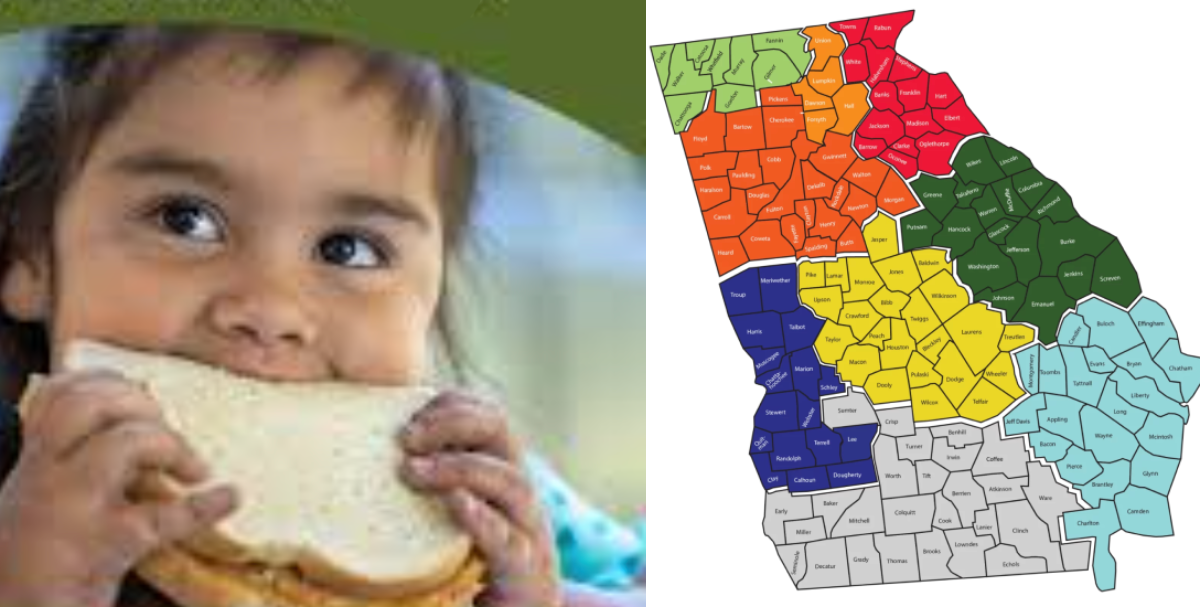The U.S. federal government has been in a partial shutdown for nearly four weeks, after Congress failed to pass appropriations bills.
This crisis is severely disrupting federal nutrition programs, which are critical for addressing food insecurity in Georgia—a state where about 1 in 8 residents (roughly 1.4 million people) rely on federal food assistance.
In this article, I’ve listed food resources in Georgia as well as tips for accessing the aid. Also, you’ll find the status of the major federal food programs.
The shutdown halts new funding for many mandatory programs, leading to potential benefit suspensions starting November 1.
However, October benefits remain available for redemption, and state agencies like the Georgia Department of Human Services (DHS) are continuing administrative functions where possible using prior-year funds.
What to Know About Federal Food Programs
Check your EBT balance via the Connect
EBT app or website (connectebt.com). Do not reapply for SNAP unnecessarily—focus on local aid.
For WIC, contact your local clinic to confirm appointments. Updates from USDA and DHS are posted at dhs.georgia.gov and usda.gov.
Alternative and Emergency Food Resources in Georgia
With federal aid at risk, Georgia’s 197 food banks and pantries (serving millions annually) are mobilizing drives and distributions.
Nonprofits like Feeding Georgia coordinate seven regional food banks covering the state, providing free groceries, meals, and holiday boxes. Many accept walk-ins with ID; some require proof of residency.
Dial 211 (Georgia’s 24/7 helpline) for immediate referrals to nearby pantries, or use online tools like Food Finder (foodfinder.us) by entering your ZIP code.
Regional Food Banks (Feeding Georgia Network): These hubs partner with 2,000+ pantries and mobile distributions. Visit feedinggeorgia.org for locations and schedules.
Where To Find Food Resources in Georgia
| Region/Food Bank | Coverage Areas | Services & Contact |
|---|---|---|
| Atlanta Community Food Bank | Metro Atlanta (Fulton, DeKalb, etc.) | Groceries, mobile pantries, kids’ programs. (404) 584-3333; acfb.org/get-help/food-map. |
| Food Bank of Northeast Georgia | 15 NE counties (e.g., Athens, Gainesville) | Emergency boxes, mobile pantries (e.g., Oct. 28 at Spirit of Sharing, Winder). Dial 211; foodbanknega.org/find-food. |
| Chattanooga Area Food Bank | NW Georgia (e.g., Dalton, Rome) | Perishable/non-perishable distributions. (706) 226-4654; chattfoodbank.org. |
| Georgia Mountain Food Bank | North GA mountains (e.g., Clarkesville) | Drive-thru pantries. (706) 754-0014; gamountainfoodbank.org. |
| Feeding the Valley Food Bank | NW GA valleys (e.g., Dalton, Rome) | Thanksgiving meal drives (Big Gobble, Nov. 1–27). (706) 226-4654; feedingthevalley.org. |
| Middle Georgia Community Food Bank | Central GA (e.g., Macon, Warner Robins) | Monthly pantries (e.g., Oct. at Ash St. Church, Macon). (478) 744-2356; mgcfb.org/find-healthy-food. |
| Golden Harvest Food Bank | East GA (e.g., Augusta, Statesboro) | Weekly distributions. (706) 736-5641; goldenharvest.org. |
| Second Harvest of Coastal Georgia | Coastal/South GA (e.g., Savannah, Brunswick) | Senior boxes, kids’ meals. (912) 748-2021; helpendhunger.org. |
Additional Local & Seasonal Resources
- Salvation Army: Statewide pantries and hot meals; request aid at salvationarmyusa.org (e.g., Columbus: southernusa.salvationarmy.org/columbus).
- Hosea Helps (Atlanta): Holiday festivals with meals, clothing, and health services (Nov. events at 2545 Forest Hills Dr. SW). 4hosea.org.
- Thanksgiving-Specific Drives (ongoing into Nov.): Harvest Movement deliveries (Nov. 12, takethecity.com); Annual Mobile Pantry (Nov. 22, Atlanta Technical College, choicesforkids.org); Feeding GA Families boxes (Nov. 22, Atlanta, feedinggafamilies.org).
- YMCA & Community Drives: Local chapters hosting food collections; check ymcaga.org for metro-area events. wrdw.com
- Urban League of Greater Atlanta: Food access for families; (404) 523-4152; ulga.org.
Pro Tips for Accessing Aid
- Bring ID, proof of address, and household size—many sites serve first-come, first-served.
- Prioritize nutritious donations if contributing: canned goods, peanut butter, whole grains (avoid perishables).
- For seniors/veterans: Contact Georgia’s Area Agencies on Aging at elderinfo.gacg.org or VA at va.gov.
- Monitor for updates: DHS (dhs.georgia.gov, 1-877-423-4746); Feeding America (feedingamerica.org, ZIP search).
Families are urged to use existing benefits wisely, apply for aid promptly, and connect with local resources immediately. Below, I’ll outline affected programs and available alternatives.
Status of Major Federal Food Assistance Programs
| Program | Current Status (as of Oct. 28, 2025) | Timeline & Details | Who It Affects in Georgia |
|---|---|---|---|
| SNAP (Supplemental Nutrition Assistance Program, aka Food Stamps) | October benefits issued and usable; November issuance suspended. | Suspension starts Nov. 1 until federal funding resumes. Existing EBT balances can be spent at authorized retailers. Applications accepted, but no new deposits until resolved. Contingency funds may cover partial November benefits if shutdown persists. dhs.georgia.gov +1 | ~1.4 million low-income households; reduces food insecurity by 30% statewide, injecting $3B+ into local economies. gbpi.org |
| WIC (Women, Infants, and Children) | Operational through October with emergency funds; at risk for November. | Temporary federal stabilization through Oct. 31; potential disruptions (e.g., clinic closures or benefit delays) if shutdown continues. Georgia’s Department of Public Health (DPH) is evaluating state options to avoid breaks. | ~200,000 pregnant women, new mothers, and young children; provides nutritious foods, education, and health referrals. |
| National School Lunch & Breakfast Programs | Reimbursements funded through October; reimbursements for November uncertain. | Schools can serve meals using October funds, but prolonged shutdown may halt federal reimbursements, forcing some districts to self-fund or reduce services. Georgia already opted out of 2025 Summer EBT for kids. | ~1.5 million students eligible; ~400,000 at risk without subsidies. |
| Head Start & Early Head Start | At high risk of closures starting Nov. 3 without funding. | Federal grants cover meals and operations; shutdown could shutter dozens of sites, cutting access to free meals for low-income families. | ~15,000 young children in Georgia; focuses on nutrition alongside education. |
Final Word
Food insecurity exacerbates health disparities in Georgia, where 13% of households face hunger.
While federal programs face immediate risks, Georgia’s robust network of local food banks, pantries, and nonprofits is ramping up efforts to fill gaps.
Calls from state Democrats for Governor Brian Kemp to use surplus funds (Georgia’s rainy day fund exceeds $5 billion) to temporarily cover SNAP shortfalls are ongoing, but no action has been announced yet.
This shutdown is a manufactured crisis, but community resilience can bridge the gap—reach out today to protect vulnerable families. If you need personalized guidance, provide your county for tailored referrals.
If saving money is something you’re serious about, AtlantaFi.com has a lot of resources to help you.
Read more:




